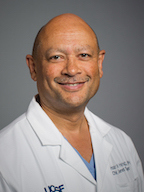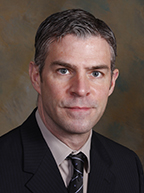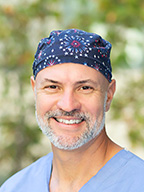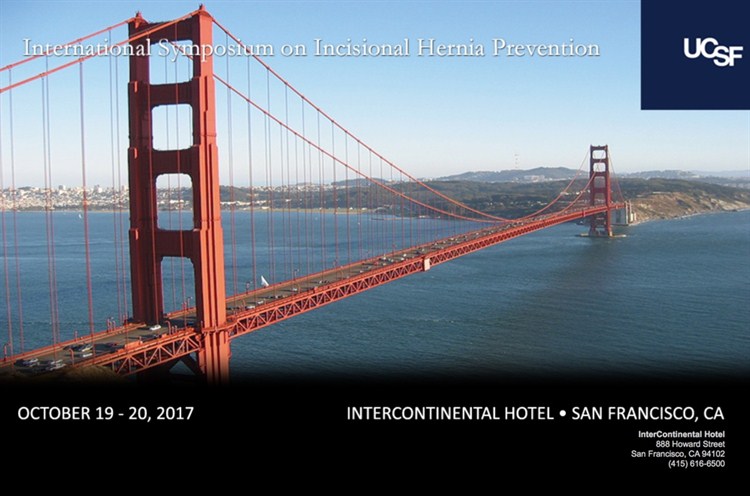Open Ventral Hernia Repair
In open hernia repair, also called herniorrhaphy, a person is given general anesthesia to sedate or help the person sleep, and this is often augmented with epidural anesthesia to improve recovery time and pain control. Then the surgeon makes an incision on the abdomen, releases scar tissue, and moves the hernia contents (often bowel or fat) back into the abdomen, and reinforces the muscle wall with stitches. Usually the area of muscle weakness is reinforced with a synthetic or biologic mesh to provide additional support to reduce the likelihood of recurrence.
Most adults experience discomfort after surgery and require pain medication. Vigorous activity and heavy lifting are limited for several weeks. The doctor will discuss when a person may safely return to work.
The UCSF Hernia Center provides the latest treatments for complex ventral hernias, such as the progressive pneumoperitoneum procedure, a specialized approach for treating particularly large ventral hernias. Our patient outcomes far surpass the national average. Patients with complex ventral hernias treated at UCSF have a recurrence rate of approximately 18 percent, compared to a 30 to 40 percent recurrence rate nationally.
Potential Complications
Surgery to repair a ventral hernia is generally safe and complications are uncommon. Knowing possible risks allows patients to report postoperative symptoms to their doctor as soon as they occur.
-
Risk of general anesthesia. Before surgery, the anesthesiologist-a doctor who administers anesthesia-reviews the risks of anesthesia with the patient and asks about medical history and allergies to medications. Complications most likely occur in older people and those with other medical conditions. Common complications include nausea, vomiting, urinary retention, sore throat, and headache. More serious problems include heart attack, stroke, pneumonia, and blood clots in the legs.
-
Getting out of bed after surgery and moving as soon as the doctor allows will help reduce the risk of complications such as pneumonia and blood clots.
-
Hernia recurrence. A hernia can recur up to several years after repair. Recurrence is the most common complication of inguinal hernia repair, causing patients to undergo a second operation.
-
Bleeding. Bleeding inside the incision is another complication of inguinal hernia repair. It can cause severe swelling and bluish discoloration of the skin around the incision. Surgery may be necessary to open the incision and stop the bleeding. Bleeding is unusual and occurs in less than 2 percent of patients.
-
Wound infection. The risk of wound infection is small-less than 2 percent-and is more likely to occur in older adults and people who undergo more complex hernia repair.2 The person may experience a fever, discharge from the incision, and redness, swelling, or tenderness around the incision. Postoperative infection requires antibiotics and, occasionally, another procedure requiring local anesthesia to make a small opening in the incision and drain the infection.
-
Painful scar. Sometimes people experience sharp, tingling pain in a specific area near the incision after it has healed. The pain usually resolves with time. Medicine may be injected in the area if the pain continues.
Injury to internal organs. Although extremely rare, injury to the intestine, bladder, kidneys, nerves and blood vessels leading to the legs, internal female organs, and vas deferens-the tube that carries sperm-can occur during hernia surgery and may lead to more operations.
For More Information
Ventral Hernia Repair (American College of Surgeons)
Complex Abdominal Surgery Program
Presentation by Dr. Hobart Harris - Open Ventral Hernia Repair







